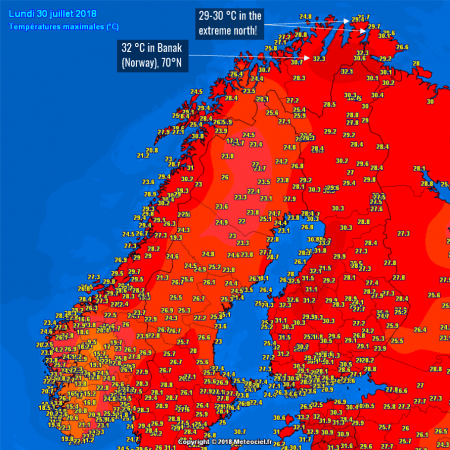It is common knowledge that the polar ice caps are melting, both in the Arctic as well as the Antarctic. Extreme weather events around the world are getting more severe and more frequent. One example of extreme weather is ongoing in the Arctic circle right now.
Temperatures in the Arctic reached a toasty 32 C or 90 F through the week This peak was reached on 30 July at Banak, Norway, according to a report by severe-weather.eu. The weather curating and reporting site noted that "exceptionally high temperatures in the extreme north of northern Europe are becoming an every day occurrence." Banak is a town off the northern coast of the country and these parts do normally experience such high heat, it notably sits over 563 km above the bottom edge of the Arctic Circle.
Towns further up north than Banak experienced 29 degrees C to 30C peak temperatures this week. Overall temperatures in the northern hemisphere and the rest of Europe itself. Ice is also at record low levels in the region. The northern hemisphere and the rest of Europe have also repeatedly faced heat waves throughout the summer. This year's heat reached both record and near-record temperatures, it is seen as a consequence of overall increasing average global temperatures from year to year, notes a report by Mashable.

UK's Met Office and severe-weather both have said that Europe's all time heat record of 118.4 F 48 C, will be broken this summer. At the same time, across the rest of the planet, heat waves have actually fed into wildfires in western United States. The report mentions that the fires were so bad this year that rare fire tornadoes were seen in some parts.
Otherwise, 2018 is all set to be the fourth hottest year on record, according to a report released last month by NOAA. The only years which have been hotter were the three years that followed 2018. This is a clear and undeniable result of climate change and its resulting global warming.
















